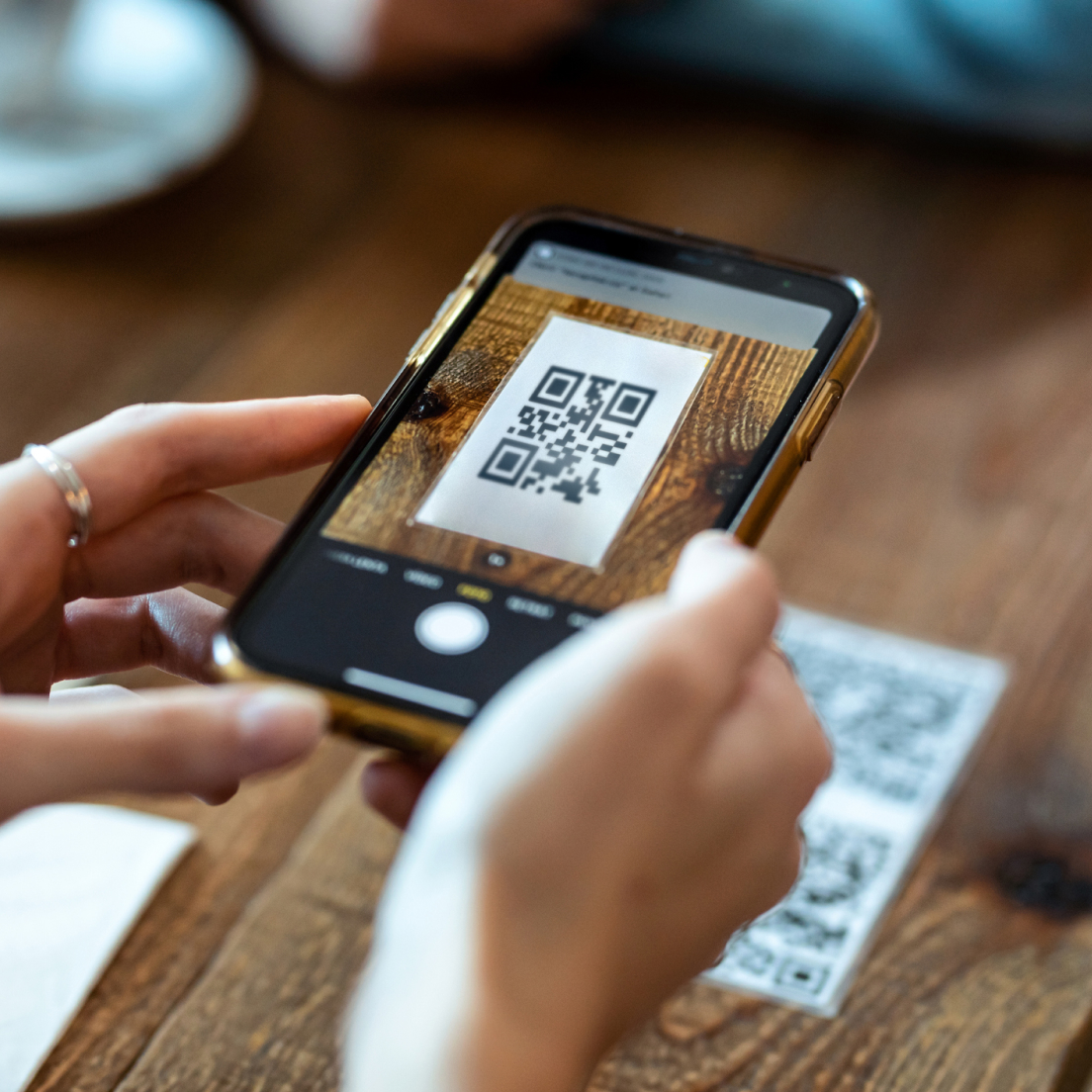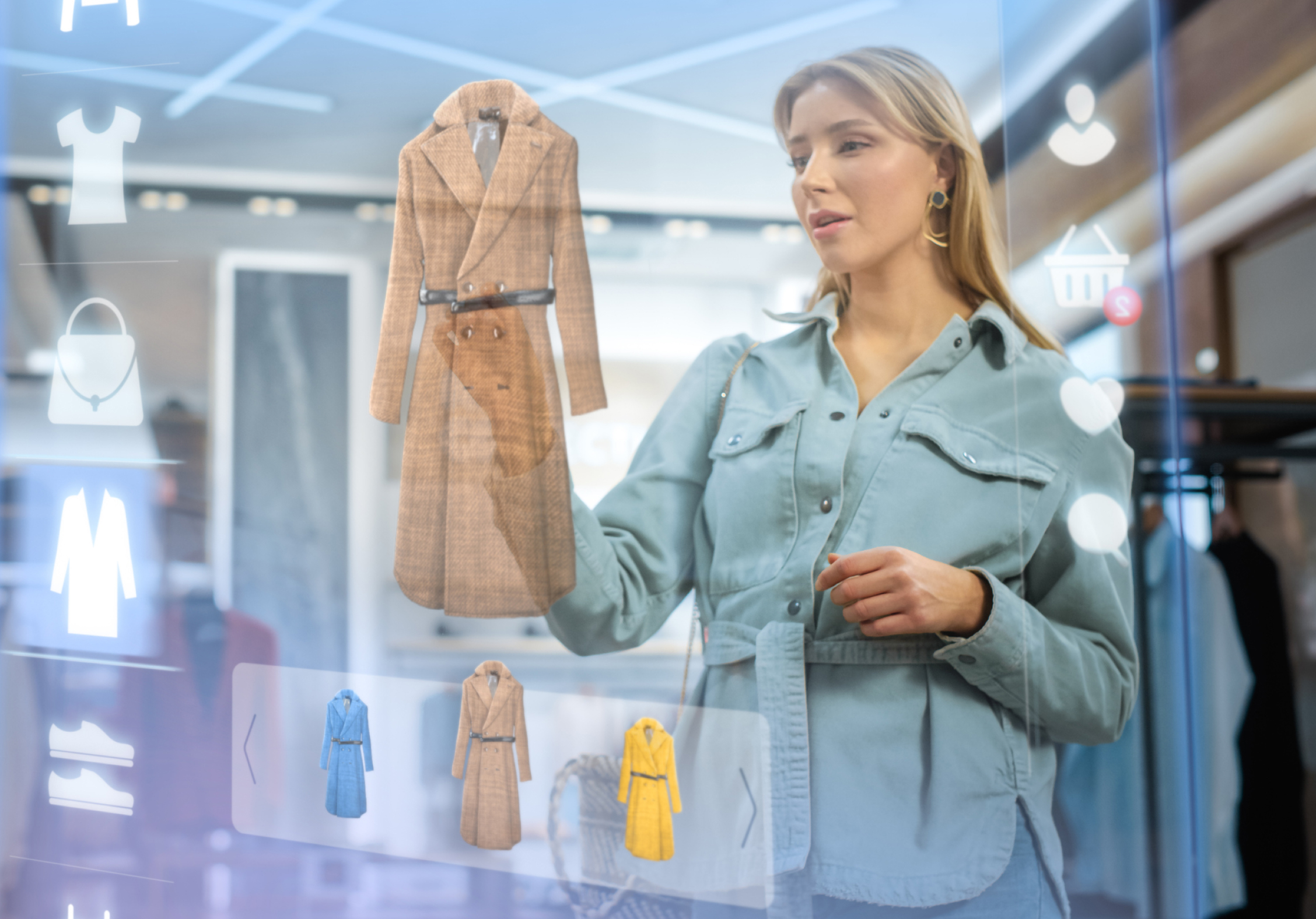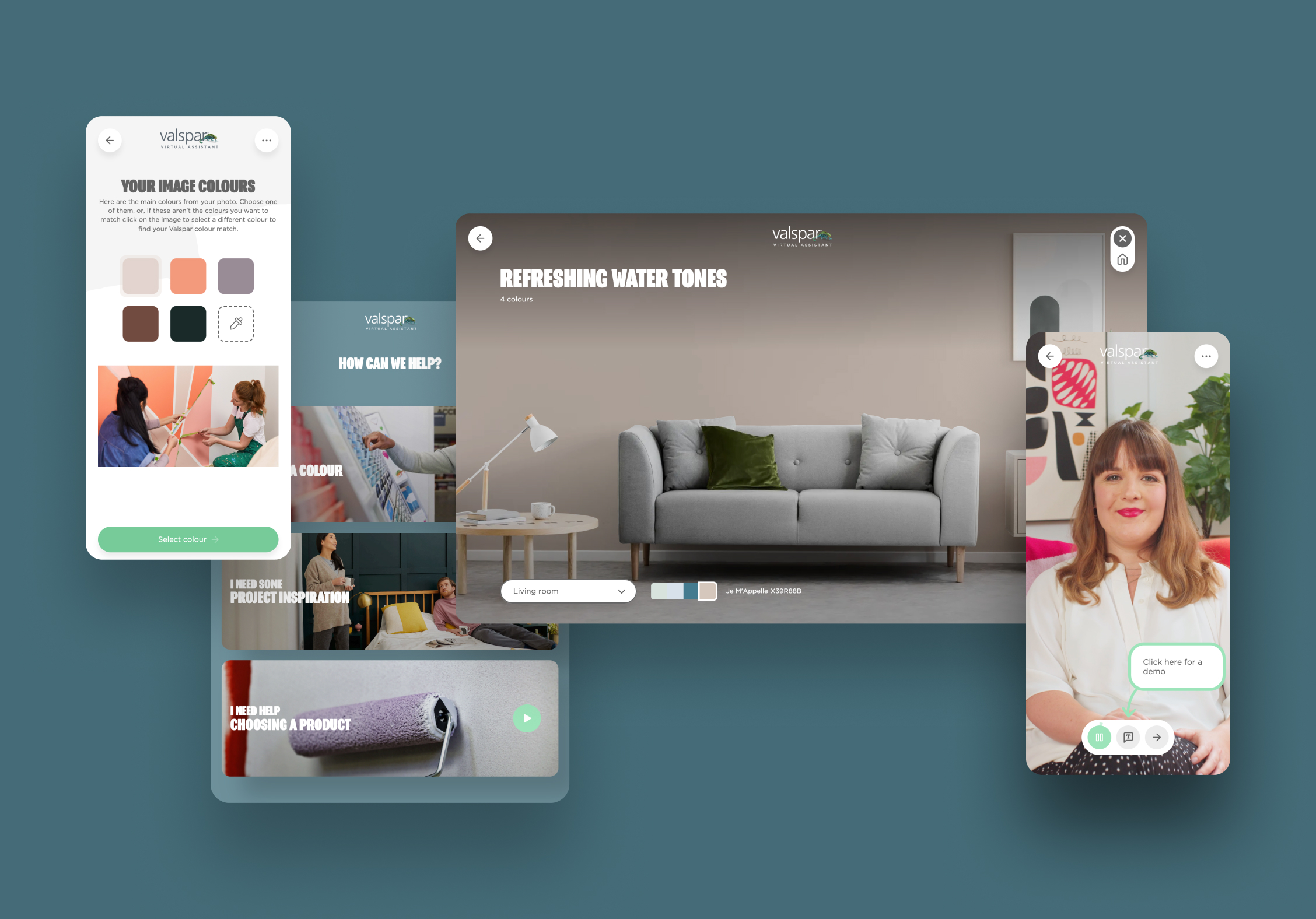Despite the rapid and ever headline-grabbing evolution of mobile, online buying habits, AI, technology, and the digital landscape in general, doesn’t it suck that the vast majority of websites and digital experiences leave you feeling a little bit ‘meh’? A little bit at odds with their offline counterparts, and a little too much of ‘same same but not really different’.
Don’t you want to explore, digest and indulge in content before you are forced by the many ‘buy now’ call-to-actions, that, through less than subtle influencing, prompt you to buy that thing that you know nothing yet about - to only then suffer buyers remorse because well, you didn’t want it anyway! Well, that's where good digital experience can play a positive role, for the user, and therefore for the brand. Win:win.
In this blog, we summarise what digital experience is, why ‘good’ digital experience is ‘great’ for business, the trends we’re seeing, a few examples, and of course, several key takeaways.

What is digital experience?
Digital experience refers to the overall experience a user has when interacting with a brand online. This could be a website, an app, a digital service, across everything from the ‘shop window’ a prospect engages with, all the way through to services a customer may use, and digital communications audiences are served. In terms of a website, app, or digital service, it’s all about making the user feel like they're having a seamless and enjoyable experience.
Investing in digital experience is crucial for brands in today's world - good digital experience equals good brand experience, and these two things are synonymous with one another.
With so much competition out there, brands need to go above and beyond to create a memorable and positive experience for their users. Not only does this lead to increased user engagement, satisfaction, and customer loyalty, but it can also result in higher conversion rates and ultimately, more revenue.
What trends are we seeing in digital experience
1. Seamless
Fast, simple, accessible, and responsive digital experiences are now the expectation, not the exception. Slow site? See you later. Search engines reward and penalise for this.
Gone are the days of clunky interfaces and limited capabilities - we're now in a world where technology is seamlessly integrated into our daily lives.
Seamless doesn’t need to be bland, same-same, or purely ‘buy now’ focused. Success of ‘seamless’ is no unintended user friction and frustration, because let’s face it, there are plenty of other challenger brands out there biting at the ankles of bigger brands with a digital-first, seamless offering.
An additional note on this: Seamless doesn’t necessarily mean ‘the fastest it can be’, it should mean ‘without frustration’ - some recent audience research we undertook for a client actually showed that there was a critical point in terms of speed/response, where a tool we created was returning results too fast, and this actually decreased trust in the tool and the brand. It was making short work of a decision process that us humans perceive to be complex - and actually highly emotional. Returning potentially life-changing results in a nano second was working at odds with the complexity and gravitas of the decision through the lens of the consumer. Just one to consider.
2. Personalisation
Another key theme is personalisation. Users want to feel like brands are speaking directly to them and catering to their individual needs and preferences. This can be achieved through things like personalised recommendations and customised content based upon first-party data and CRM powered information held on that user.
With sophisticated algorithms that can track our every move, companies can tailor their products, services, marketing, and landing pages to our individual preferences. The future of digital experience is all about anticipating the needs of the user before they even have them. Awesome in some ways, scary in others but however you cut it, relevancy will always resonate best.
3. Immersion
The future of digital experience is also about immersion. Virtual reality technology is already taking the world by storm, and it's only going to get more advanced, as is augmented reality too. Imagine being able to step into a fully-realised digital world, where you can interact with other people and objects as if they were real, and instead of seeing people virtually in a 2D perspective (think standard video calls), you could get more of a real-life 360 view of a digital environment, where eye focus actually means something again. I know the Metaverse’s initial bark seems louder than its bite (for now) but as technology evolves - and it will continue to evolve - the possibilities will continue to expand, rapidly.
Immersion, in my mind, is also about how the offline and online world could be more closely aligned and interact with one another, thus not only making for a better digital experience, but also enhancing a user's overall brand experience. We already see it with AR ads coming out of buildings, being able to virtually ‘try on’ clothes in a shop’s digital mirror, and general two and three-screen interaction with TV shows.
Very exciting times for consumers to truly immerse themselves in a brand and their products, and to help bridge the offline-online gap.

4. Conversational Marketing
Another trend in digital experience is conversational marketing, including the integration of chatbots and AI.
These technologies can provide users with quick and efficient assistance, making their experience more seamless and hassle-free. Plus, they're available 24/7, meaning customers can interact with brands on their terms. From a business perspective, they can greatly streamline audience enquiry workflows and triage users quickly and effectively….if done well. Note: like anything, I've seen this executed badly too, so the same rules apply in terms of understanding the audiences, and tailoring the content/triage accordingly. Nothing (at the moment) can beat real-people dialogue, but it can massively help to speed customer service up and triage people accordingly.
So what does the future of digital experience look like?
It looks exciting, immersive, and full of potential.
Sounds great but…
Of course, with all this new technology comes new challenges.
As we become more reliant on digital experiences, we'll need to ensure:
-
Data Privacy: That our data and privacy are protected. Cybersecurity will become more important than ever, and you will need to invest in advanced security measures to keep your customers (and their data) safe.
-
Brand: Consistency in brand TOV and brand experience across an ever-growing plethora of brand touchpoints will be essential. Brand is, after all, the sum total of all interactions and consistency is absolutely key.
-
Data overload: With rapidly changing consumer habits, channels, and the ever-evolving marketing landscape, data is abundant. But like an expensive guitar hanging on the wall, it’s what you do with it (and actually why you do it) that really matters. Balance reporting and uncovering the what (the data) with the why, and then prioritising your hows (actions). Don’t try to test too many things at once, and ensure that any tests you do are statistically relevant. In addition, consider the counter-factual, what don’t you know, what is the data not telling you. And finally, talk to your audience, qualitative insights can be powerful and shine a light on what you hadn’t considered before.
-
Continuous improvement: Get it live, quick, and then use real-data to drive continuous improvement. Test, learn, refine, optimise.
An example of excellent digital experiences - Valspar Virtual Assistant
Now, we may be blowing our own trumpet here a little but why the devil not! We are proud of the work we do for our clients and this example has recently won us two highly credible industry accolades (Best Partner Solution from Umbraco’s Global Awards & Best B2C Website in the UK Digital Growth Awards).
You can read the case study here, but for now, here’s a quick summary.
To set the scene, Valspar is part of the Sherwin Williams Group, who are the world’s largest paint and coverings manufacturer with over 30% market share.
We have worked with Sherwin Williams for the past 6 years, across 10 of their subsidiary brands, each with its own nuances, distinct go-to-market challenges, and commercial arrangements.
Valspar’s Virtual Assistant
One of our latest digital experience collaborations with Sherwin Williams for their Valspar brand was to create an immersive experience that allows consumers to “colour with confidence”.

What we did
We set out to create a digital tool that gave consumers the confidence to choose one of the 2.2 million paint colours Valspar can mix.
The challenge
The tool needed to remove the paradox of choice both at home and in store encouraging consumers to purchase Valspar.
Our approach
We embarked on a project that saw us interview regional managers to gain insight about how in-store consumers make decisions in store. We created an insight-led user journey inspired by these, and worked with a leading trends agency to ensure everything we did not only met, but exceeded both client and consumer expectations.
The Solution
Accessible online or in-store, the Valspar Virtual Assistant helps DIY enthusiasts on their customer journey, offering interactive tools such as: A photo uploader, a colour visualiser, a coverage calculator and informative video guides. All of these features are packaged into the helpful hub, helping customers define their paint project, choose the right colour, purchase the perfect product (and have fun along the way).
Why it's been a success
Because its premise, existence, and validation was based upon genuine audience insight. As with any successful digital experience, the audience, their purchase journey and all their nuances need to be understood, and then the live product continually optimised based upon learnings.

You manage a brand's digital experience - what should you prioritise?
Managing a brand can be a daunting task, especially when it comes to the digital experience of your business. With so many platforms and channels to navigate, it can be difficult to know where to start. Here are some useful pointers:
Know your audience.
It’s not what you think or we think, it’s what your audience experiences that is most important. It’s essential that you understand who your audience is, how they differ, what their motivations, triggers, influences, and pain points are, and importantly, what their buyer journey looks like, and the role your digital ecosystem can and should play in supporting them.
Mitigate user frustration.
A top priority should be to create a digital experience that mitigates user frustration. Your website should load quickly, your social media pages should be easy to navigate, and your mobile app should be user-friendly. If your digital experience is clunky or frustrating, customers will quickly lose interest. And remember, your competitors are never more than a few clicks away.
Make a lasting impression.
You need to make sure that your brand's personality shines through in every aspect of your digital experience, and that it is consistent. No matter the touchpoint, your brand should be instantly recognisable and memorable. After all, you don’t want customers to think of your brand as another faceless corporation.
Stay ahead of the curve.
Another priority should be to stay on top of the latest trends in digital marketing. This means keeping up with the latest social media platforms, mastering new technologies like chatbots and AI, and constantly experimenting with new ways to engage with your audience. If you're not constantly innovating, you're falling behind - likewise, this doesn’t mean you should jump on the bandwagon for every new innovation and fad. Keep your ear to the ground, look outside of your bubble, listen to and anticipate your audience's needs.
Monitor, measure and optimise.
Don't forget to measure your success. Use analytics tools to track your website traffic, social media engagement, and other key performance indicators. This will help you identify what's working and what's not, so you can make informed decisions about how to improve your digital experience.
Digital experience is a must-have
Digital experience is no longer just a nice-to-have for brands. It's a must-have. By investing in a seamless and enjoyable experience for users, you can increase customer loyalty, advocacy and ultimately, your bottom line. So, if you're a brand looking to up your digital game, take note of these trends and examples and get to work, or even better get us to work with you.
The experience to transform your experience
As a digital experience and performance agency, our mission is to transform and grow brands digitally, ethically and sustainably, and to forever challenge expectations about what digital can deliver.
If you’re seeking a digital experience that can supercharge your business performance — we’ve got the experience to make it happen. In fact, as an Umbraco Gold partner, we’ve delivered over 250 digital experiences since we started out in 2008. So what are you waiting for? Get in touch today and let’s get growing!

Ready. Steady. Grow!
We've helped some of the world's biggest brands transform and grow their businesses. And yours could be next.
So if you've got a business challenge to solve or a brief to answer, we'd love to hear from you. Simply complete this form and one of our experts will be in touch!




